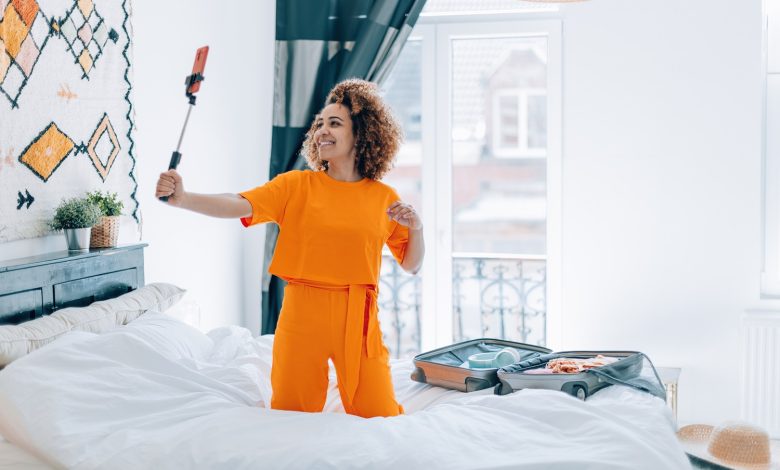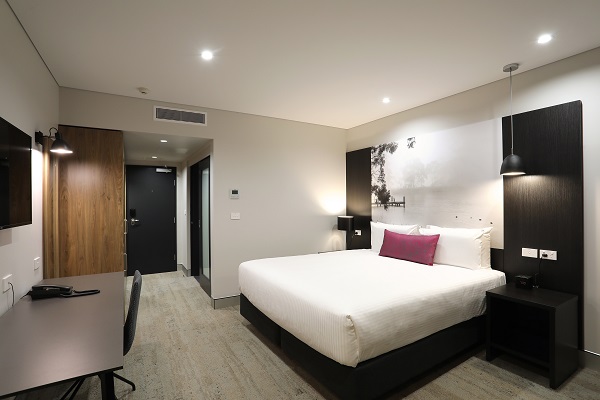
Op-Ed: How to embrace influencers looking for freebies
Are influencers requesting complimentary accommodation or experiences from you? Audacious! But Henry Valentine says it could unveil promising opportunities...
When done right, influencer marketing is the most valuable form of marketing money can buy. While it might seem audacious for influencers to request complimentary accommodation, a smart approach could unveil promising opportunities.
In recent years, influencer marketing has soared to unprecedented heights. Consequently, the hospitality sector has witnessed a surge in ‘influencers’ seeking perks in exchange for their online influence.
Read the summer print edition of AccomNews HERE
Granted, it’s tempting to decline such requests outright. However, dismissing them could mean missing out on significant ROI. Authentic endorsements from influencers can significantly enhance brand perception.
Ironically, despite hefty investments in influencer collaborations, many major brands find the resulting content inauthentic and underwhelming – it’s tough to pretend to be a fan of a brand! When an influencer reaches out to you, you can be assured they are already fond of your establishment.
Inauthentic – an influencer in China promoting multiple products with just 3 seconds each…
@glew.ee This viral Chinese influencer made $14 million in just a week from selling products on Douyin livestreams. And the craziest part? She only shows each item for 3 seconds. #douyin #zhengxiangxiang #tiktoklive #tiktok #livestreamshopping #ecommerce #socialmedianews #influencers #influencernews #socialmediamarketing ♬ original sound – Glewee – Paid Brand Deals
From a financial perspective, independent influencers tend to offer the most cost-effective partnerships (compared to agencies, who charge hefty fees). Moreover, if compensation is solely through bookings, attracting a single new customer could recoup your investment. The potential ROI is undeniable.
But how do you discern if it’s worthwhile?
While follower count is the go-to metric, in influencer marketing, it only scratches the surface. It’s more pertinent to first categorise your influencers as content creators, micro-influencers, or macro-influencers:
- A content creator is someone with a very small audience with no value to your brand, but who can produce high-quality engaging content.
- Micro-influencers boast modest yet engaged followings, have audiences relevant to your brand, and are likely to drive bookings.
- Macro-influencers command large followings (100k+), offering extensive reach and awareness capabilities, albeit with a potentially low engagement rate.
Influencer marketers employ sophisticated tools like Tagger to scrutinise an influencer’s audience and gauge alignment with their clients’ brands. But, for smaller operations with tougher budgets, it’s acceptable to request analytics directly from the influencer (in fact, their refusal should raise concerns).
Assessing their audience
Evaluating their audience demographics (age, gender, location etc.) is crucial to ensure compatibility. For instance, a local influencer might primarily attract local followers, which won’t align with a hotel targeting interstate or international travellers. Or, a luxury hotel might prove too pricey for a TikToker with young followers.
If there’s no audience alignment – that’s okay! If their content is of high enough quality, you may want to pursue a partnership with them as a content creator, not an influencer.
The Westin partners with a content creator…
View this post on Instagram
An influencer’s audience geographics can also give you insight into how authentic (i.e. not filled with bots and inactive accounts) their followers are. An unusually high proportion of followers from unrelated countries may indicate bot activity.
Evaluating content health
Another effective tactic that can help determine authenticity and value is assessing content performance. We recommend requesting data on recent content, ensuring the influencer doesn’t cherry-pick their best posts. Compare reach and engagement rates, with emphasis on the types of engagements received—likes and comments are great, but shares, saves and website interactions serve as better indicators of purchase intent.
QT Hotels partners with a micro-influencer…
View this post on Instagram
Average content reach will give you a good indication of their true audience size. An active follower should be consistently reached with content from an influencer with healthy analytics. Is their audience just scrolling past? Or are they engaging with consistency and relevance? Keep in mind that the majority of social media users are passive – they won’t engage with content but may have purchase intentions.
Building a contract
Once you’ve determined how valuable their audience is (or isn’t) to you – you can start negotiating contracted outputs to make the partnership worth your while.
For content creators, ownership of content created during their stay is paramount. Retain full copyright to post on your channels, and ensure you have full paid usage. Given you aren’t using their audience, or distributing content via their channels – treat this negotiation simply as asset production and make sure you get your money’s worth of outputs.
For micro or macro-influencers, it’s a bit more complicated. Since the influencer retains copyright, you’ll need to negotiate a period of organic and paid usage wherein your brand will be able to use the content as marketing material. You’ll also need to establish whether (if ever) the content is deleted from their channels. The contract should also cover brand exclusivity, the number of outputs, asset formats, non-disparage clauses, community management frameworks, analytics benchmarks, and detailed posting instructions.
Ensure clear expectations and legal obligations to guarantee the influencer earns their perks through diligent work and the value of their audience rather than getting by on a wink and a promise.
One key detail that brands tend to miss is ensuring the native social platform paid partnership tools are utilised. These tools keep your branding front and center and help fulfil your paid promotion declaration obligations.
Compare engagement from two posts from Grand Hyatt and Hyatt Centric. One features a collaboration with the influencer and the other does not…
View this post on Instagram
View this post on Instagram
Holding influencers accountable
Typically, an influencer will know how much they usually charge for a piece of content and request a package of equal value. The terms of your contract need to be written in such a way that ensures the influencer has as much a responsibility to you as you do to them.
A micro-influencer partnering with QT Hotels, and also using affiliate marketing to sell pet clothing…
View this post on Instagram
A great way to ensure ROI is by establishing an affiliate marketing infrastructure to help track conversions generated from influencer content. Savvy brands can even protect their budgets by implementing affiliate systems that reimburse influencers based on new business generated, rather than offering a freebie upfront.
If that’s too much work – a simple ‘How did you hear about us?’ form added to your booking journey is a great way to keep track of influencer conversions.
The last few key considerations
Influencer marketing can be an incredibly rewarding process. Rather than booking standardised media, you’re building relationships with the people who will define your brand. As time goes on, you can work with them on more personalised, innovative approaches, like embedding benchmarks into campaign contracts and working with influencers on possible make-good offerings if these obligations aren’t met.
I also recommend maintaining oversight and including a strict timeline, with check-ins, ample feedback opportunities, time for reshoots and final approval. Make your expectations clear and legally binding and ensure that the influencer you’re providing freebies for is putting in the work to earn it.
So, the next time an influencer requests a free stay, embrace the opportunity confidently, knowing positive ROI outcomes await.






